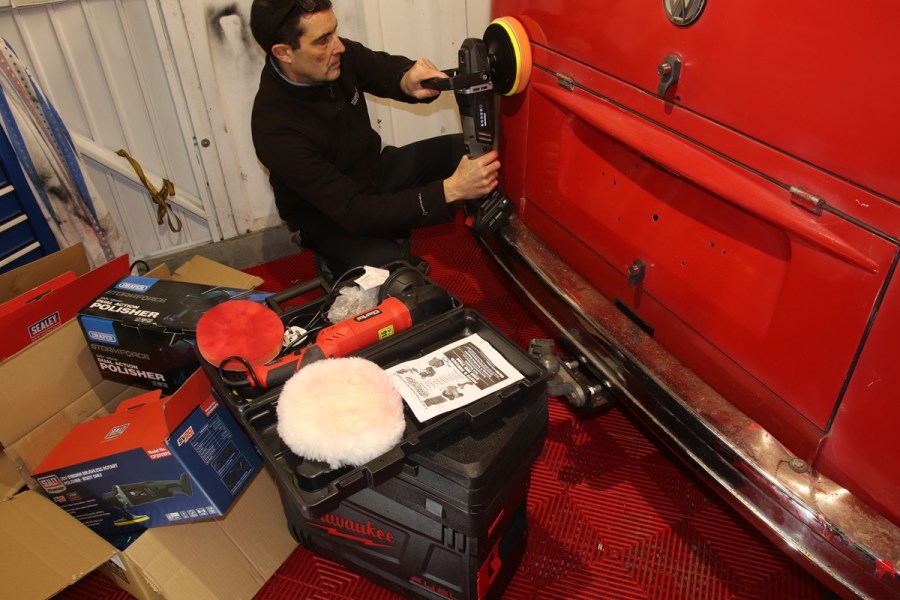I’ve chosen nine of the best machine polishers on sale today and have been testing them for several months to find out which come out on top.
A car polisher can be useful for rectifying faded paintwork or removing unsightly swirl marks. It can also help to produce a glaring shine to your car’s paintwork. But the results can be disastrous if you don’t know what you are doing. And not all polishers are the same. For example, they have different speeds. Some start up slowly to help avoid damaging the paintwork. The way a polisher rotates isn’t the same. Some have a dual action, others a random orbit and some simply rotate. I’ll explain more later.
Choosing the right polisher for you might be down to budget, but there are other considerations. Do you want mains power or battery? A brushed motor or a quieter but more expensive brushless one? A storage bag with accessories? All these questions and more are answered in this group test.
DA, random orbit and rotary explained
There are three types of classification of polisher which describe how the motor rotates. These are dual action (DA for short), random orbit (also called random orbital) and rotary.
A dual action polisher rotates in a circle and also oscillates in an off-center or random circular motion. You can see this on most DA polishers by fitting a backing pad and spinning it (check the power is off). Hold the pad and try to gently move it in a circle without spinning it. This is the off-center motion.
Random orbit polishers have a simple off-center spindle, which moves in several circular paths. They are not so random as a dual action. But a random orbit polisher produces a constantly changing rotation and oscillation. So it creates more variation in its motion than dual action.
DA and random orbit polishers have their limitations on movement. This is a measurement of how much variance the polisher has when rotating. Look for information concerning the pitch circle diameter (PCD), orbit or stroke diameter, which is usually stated in millimeters (mm).
So it seems that a random orbit polisher is better, but what about rotary polishers? They don’t offer any variance in rotation. Many of the professional polishers are the rotary type. And from the professional bodyshop people I have spoken to, they prefer these.
How I tested the best machine polishers
With faded red paintwork on my VW Bay Window camper and strange deposits on the roof of my Mk4 Mondeo, I could make use of these polishers. However, I also realized that testing these nine car polishers wasn’t just down to how they perform. I needed to look at what you get for your money. Some include a carrycase and accessories, for instance.
The length of the power cord, or whether its cordless helped to add or remove points.
I found the amount of noise and vibration was a major consideration for these polishers. Ear plugs and thick work gloves may be needed for some of them.
How each polisher performs is harder to assess than I initially expected. It’s straightforward to look at the ease of operating the controls for switching it on and adjusting the speed. But it’s not so easy to say that one polisher is ineffective and another does a better job. My skill level at buffing may be to blame.
Best machine polishers at a glance
- Best Overall & Best Value: Sealey 20V 180mm brushless rotary polisher – RRP: £148.61, buy it here.
- Editor’s Choice: DeWalt 180mm 18V brushless cordless rotary polisher – RRP: $398.42, buy it here / ~£270, buy it here.
- Approved: Draper Storm Force dual action polisher – RRP: £95.81, buy it here.
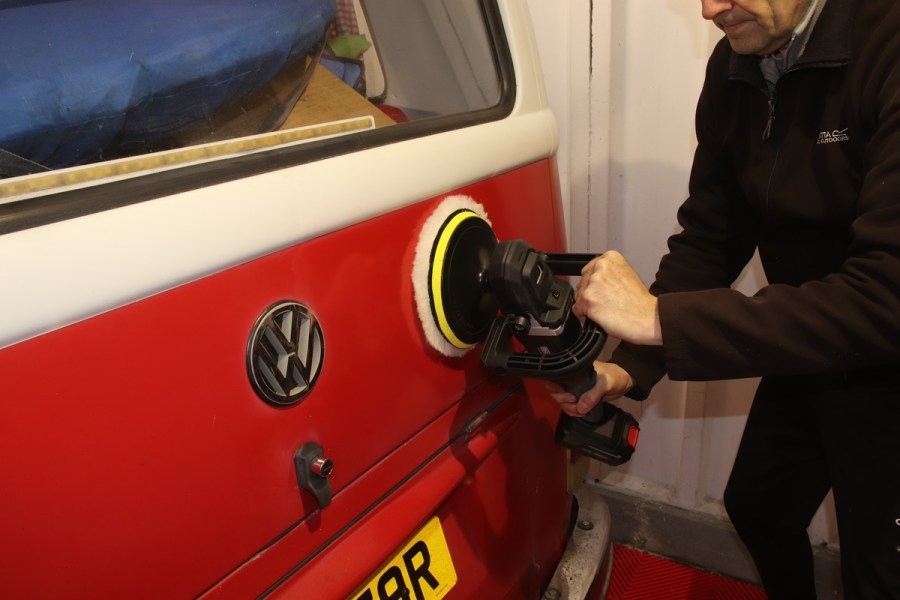
Sealey 20V 180mm brushless rotary polisher
Award: Best Overall & Best Value
Pros: Useful range of speed settings from 800rpm to 2,300rpm
Cons: Noisier than similar brushless motor polishers
RRP: £148.61, buy it here. Not available in the US – consider this instead ($207.60)
Sealey produces a range of power tools (drills, drivers and even a hedge trimmer) powered by a 20V rechargeable battery. This polisher is ideal if you already have a few of these tools. If you don’t then look out for bundle deals to save on buying separate batteries and a charger.
With a brushless motor and a selection of 180mm-diameter accessories, this is the only polisher with a couple of handles. There are six speed settings (800-2,300rpm), selected via a rotary dial. And there’s a useful lock button next to the trigger, which prevents the machine from being accidentally operated.
An initial press of the trigger results in a moderately smooth rotation of the spindle. And the harder you squeeze it, the faster the motor turns (up to whatever speed setting is selected).
Being a brushless motor, this battery-powered rotary polisher is in direct competition with the DeWalt model I have tested. Sealey’s polisher is cheaper, slightly heavier (by 1.1lb or 500g) and has a noisy high-pitched motor that left my ears ringing after use.
For more information about the Sealey 20V 180mm brushless rotary polisher, be sure to check out the full review.
We check 1,000s of prices on 1,000s of retailers to get you the lowest new price we can find. Fastcar may get a commission from these offers. Read more here.
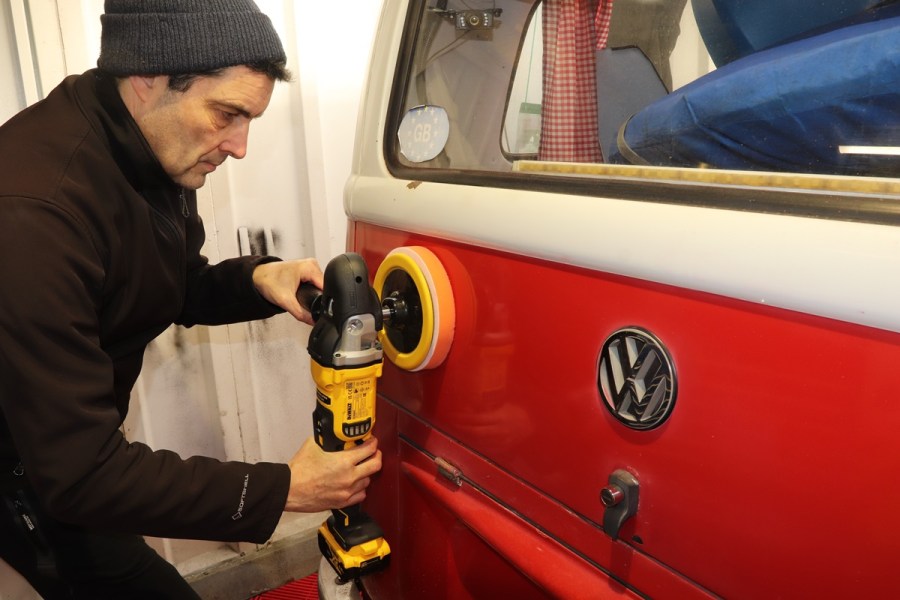
DeWalt 180mm 18V brushless cordless rotary polisher
Award: Editor’s Choice
Pros: Controllable and smooth brushless motor. Low-range speeds (800rpm to 2,200rpm)
Cons: No polishing accessories included
RRP: $398.42, buy it here / ~£270, buy it here.
DeWalt has a good reputation for producing professional power tools that share batteries. This polisher meets those expectations. It has a brushless motor that’s smooth-running and quiet. There are eight speed settings from 800rpm to 2,200rpm, which are suited to polishing and paint rectification. And whilst it’s a rotary polisher, not a DA or random orbit, it seems to be effective in use.
If you don’t have much polishing or paint rectification work to do, this might be an expensive investment. But at the same time, what price should you put on your car’s paintwork? Perhaps a pro’ polisher can be justified.
I tested a bundle kit, which includes a couple of batteries and a charger. There’s also a backing pad, but no sponge pads or polishing bonnets.
Operating this polisher is so simple. This is one of the best variable speed triggers I’ve tested. There’s a rotary dial on the top of the body to select one of the eight speed settings. Whichever speed setting is chosen, the motor starts up slowly. And the more you squeeze the trigger, the faster the motor spins up to whatever speed has been set. When in use, it’s easy to move that speed-setting dial to increase or decrease the speed.
Other likeable features include a lock button for the trigger and indicator lights for the state of each battery.
For more information about the DeWalt 180mm 18V brushless rotary polisher, be sure to check out the full review.
We check 1,000s of prices on 1,000s of retailers to get you the lowest new price we can find. Fastcar may get a commission from these offers. Read more here.
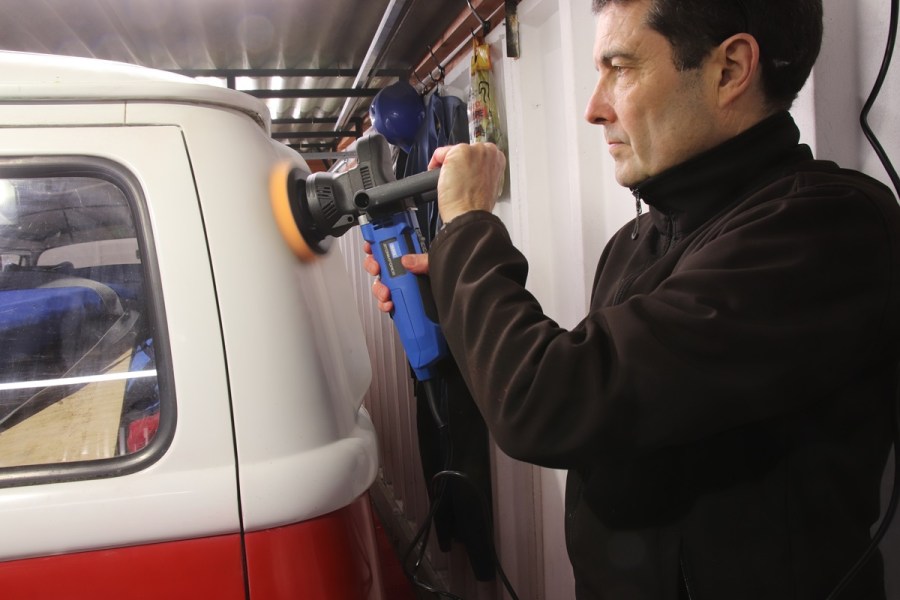
Draper Storm Force dual action polisher
Award: Approved
Pros: Budget-priced polisher that’s ideal for a novice
Cons: Experienced users might want better
RRP: £95.81, buy it here, not available in the US.
This is the cheapest polisher I’m testing and has the longest power cord at over 16ft (5m). It seems to be good value for money, especially as you get everything you need to start polishing. Using a brushed motor, the speed settings range from 2,000rpm to 6,400rpm – a little fast for some polishing jobs. A rotary dial on the back of the body selects one of the six speed settings. A plastic slider switch on the top of the body switches the motor on and off. I like the smooth operation of the slider, which results in a progressive start-up of the motor. There’s a small amount of variable speed built into this slider.
There is a noticeable amount of vibration through the body at all speeds, which reduces consistency. At 4.8lb (2.2kg), it’s as light as the more expensive polisher I am testing from Milwaukee. However, the results from polishing and rectifying faded paint weren’t so good. We asked a pro’ polisher for a second opinion. He also agreed that it jumps around.
For more information about the Draper Storm Force dual action polisher, be sure to check out the full review.
We check 1,000s of prices on 1,000s of retailers to get you the lowest new price we can find. Fastcar may get a commission from these offers. Read more here.
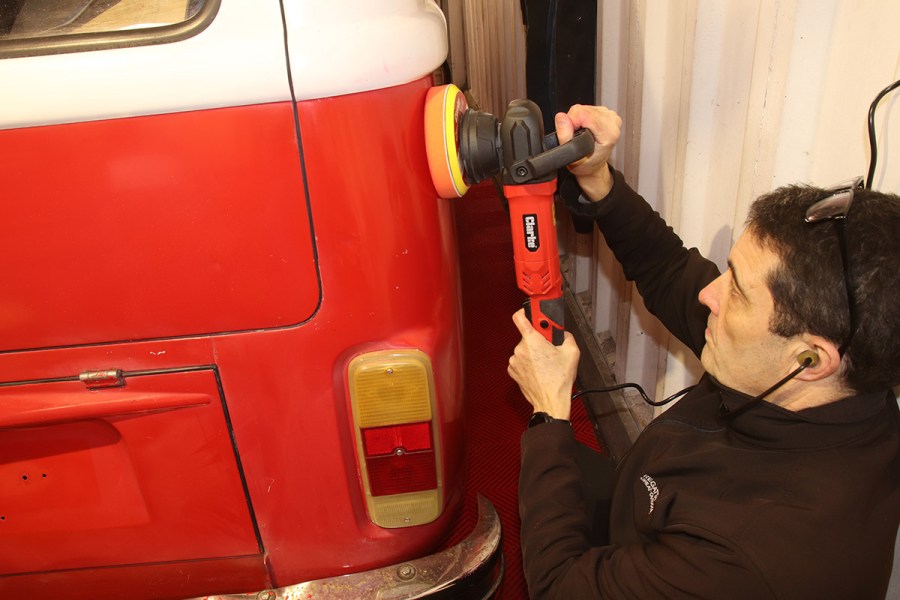
Clarke CP150 Pro’ dual action sander/polisher
Pros: Includes all you need to get started and is stored in a carrycase
Cons: Noisy with lots of vibration. Not much use as a sander
RRP: £83.98, buy now.
Three of the polishers I am testing double up as a sander. Sadly, none of them are very effective at sanding. A dedicated sander is much better.
As a polisher, this entry-level one comes with everything you need to get started. And it’s all stored in a rugged carrycase, although the polisher has to be dismantled to fit it inside.
Assembling the polisher is a little awkward. Fitting the supplied six inch-diameter (150mm) hook and loop backing pad requires a spanner (supplied) squeezed between it and a 14mm nut on the body.
The power cord is a little over 6ft (2m) long, so it’s quite short. There are six speed settings for the brushed motor, selected via a dial numbered 1 to 6. All I know is the maximum speed is 6,000rpm. Whichever setting is chosen, there’s lots of vibration and noise. It’s supposed to be 91.3dB, so ear defenders or plugs will help here.
For more information about the Clarke CP150 Pro’ dual action sander/polisher, be sure to check out the full review.
We check 1,000s of prices on 1,000s of retailers to get you the lowest new price we can find. Fastcar may get a commission from these offers. Read more here.
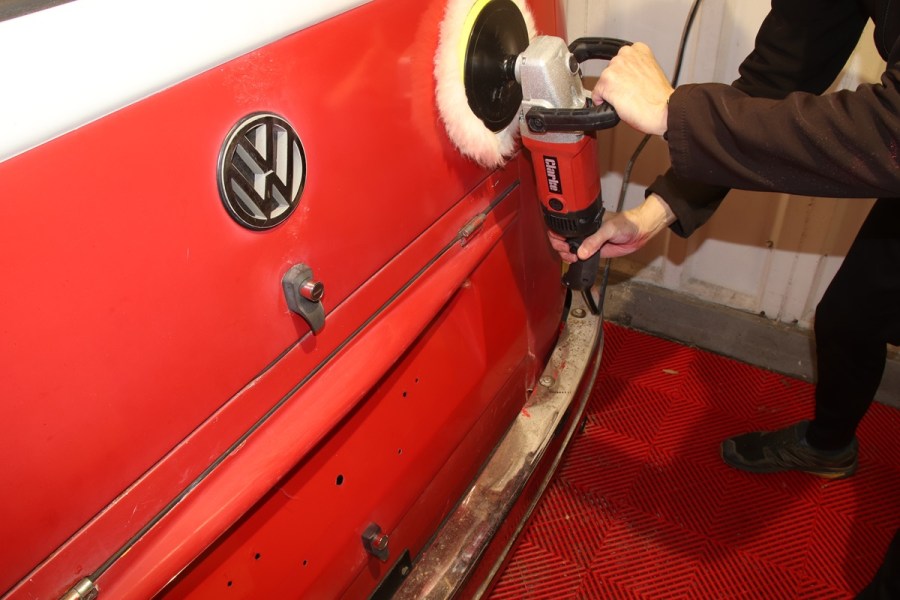
Clarke CP185 sander & polisher
Pros: Comes in a large carrycase with almost everything to get you buffing
Cons: Noisy and lots of vibration. No sponge pad
RRP: £89.99, buy it here.
Another combined sander and polisher that isn’t much use as a sander. As a polisher, it comes with almost everything to get started. A sponge pad would be useful. And it’s all stored in a large plastic carrycase, although the catches that lock the lid look a little flimsy.
Assembling the polisher is quite a battle. The D-shaped handle is a very tight fit. But I like the lock button on the top of the body to hold the motor when fitting the backing pad. The 6ft-long power cord is a little short.
There’s a comprehensive user manual explaining how to use the equipment, spares availability, fault-finding and instructions on replacing the brushes. There’s even a spare set included.
The minimum speed of the brushed motor is 600rpm. There are six speed settings, chosen via a dial on the body. The fastest is 3,000rpm. As a polisher, it’s controllable, but the noise (96dB) is almost deafening. And it’s heavy at 8.2lb (3.7kg).
For more information about the Clarke CP185 sander and polisher, be sure to check out the full review.
We check 1,000s of prices on 1,000s of retailers to get you the lowest new price we can find. Fastcar may get a commission from these offers. Read more here.
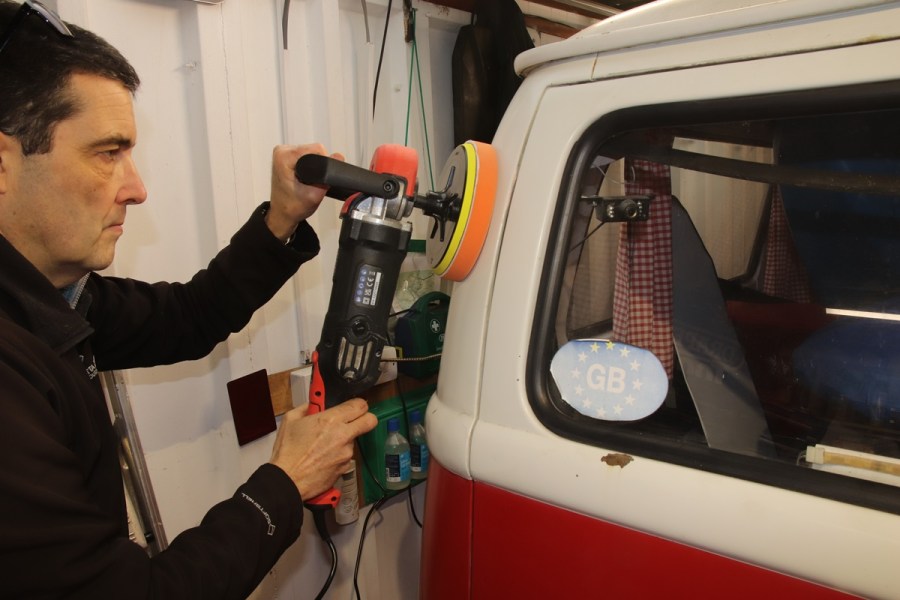
Sealey 180mm variable speed sander/polisher
Pros: Useful range of speed settings from 600rpm to 3,000rpm
Cons: No sponge pad and no carrycase or bag. Short power lead
RRP: £92.99, buy it here.
The heaviest polisher on test, weighing in at 8.8lb (4kg). It’s too aggressive as a sander, but better as a polisher. It comes with a large plastic D-shaped handle and a couple of hex screws to secure it to the body. The 6ft-long (1.83m) power cord is quite short. There’s a seven inch-diameter (180mm) hook and loop backing pad, which is very straightforward to fit. A lock button on the body stops the spindle moving.
The short instruction leaflet supplied with this equipment states the spindle has a left-hand thread. My test model had a normal right-hand thread.
The speed settings range from 600rpm to 3,000rpm. There’s a dial on the top of the body to alter them. And a lock button so you don’t need to keep the trigger pressed. This polisher has a soft start, so it progressively builds up to its selected speed.
As a polisher, it’s easy to use. At the two slowest speeds, the motor seemed to be occasionally dropping in speed. I used the supplied polishing bonnet, but borrowed a sponge pad from another polisher. At times, the polisher grabs and is heavy to hold. It’s also quite noisy at 93dB, especially at the fastest speed setting.
For more information about the Sealey 180mm variable speed sander/polisher, be sure to check out the full review.
We check 1,000s of prices on 1,000s of retailers to get you the lowest new price we can find. Fastcar may get a commission from these offers. Read more here.
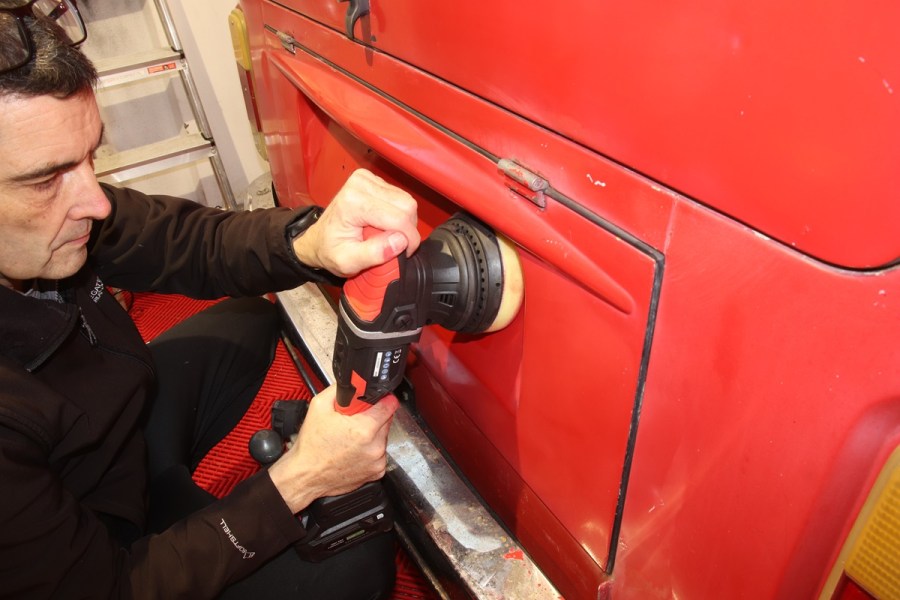
Sealey 125mm cordless orbital polisher
Pros: Bundle kit deals are tempting. Battery can be used on other power tools
Cons: Noisy and the slowest speed is still too fast for polishing
RRP: £115.95, buy it here.
This cordless random orbit polisher is part of Sealey’s SV20 series of power tools. So its range of 20V 2-6Ah rechargeable batteries are used with everything from drills to gardening tools. If you don’t already have the batteries, look out for bundle deals.
This polisher appears to be compact. There’s no handle. It has a small diameter pad at five inches (125mm). The controls are a little quirky. There’s a slider to switch it on and off (look for I and O markings for on and off). When running, there’s a small square LCD panel to display the speed setting. The speed of the motor is increased and decreased via a couple of buttons. The lowest setting of the brushless motor at 2,000rpm is quite fast for polishing and none of the speed settings start off gradually. 4,800rpm is the fastest and all of them are noticeably noisy. There’s a distinct high-pitched buzz from the motor.
At 125mm for the pad diameter, it’s useful for tight spots. And there’s 15mm of offset orbit, so it’s sufficiently varied.
For more information about the Sealey 125mm cordless orbital polisher, be sure to check out the full review.
We check 1,000s of prices on 1,000s of retailers to get you the lowest new price we can find. Fastcar may get a commission from these offers. Read more here.
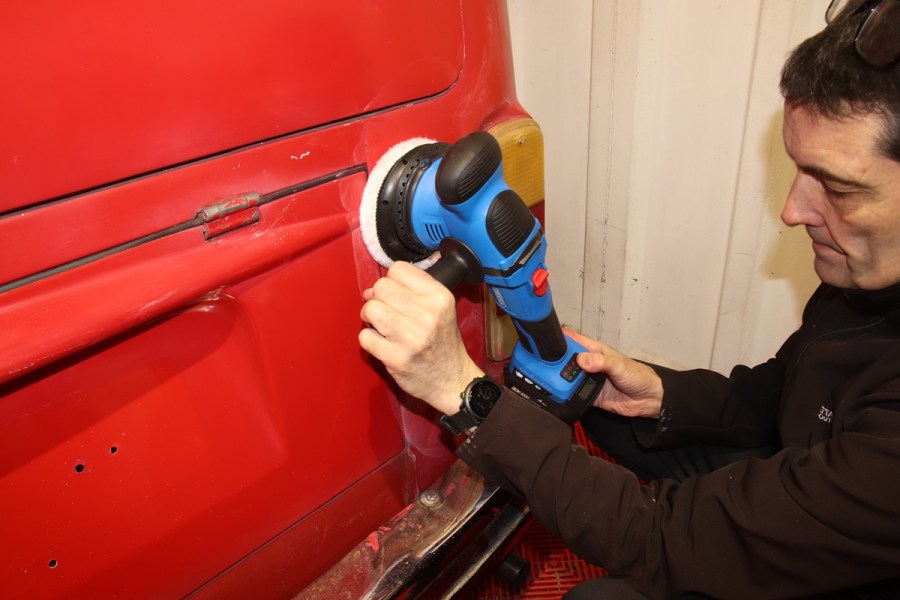
Draper 20V random orbit polisher
Pros: Useful range of speed settings from 1,600rpm to 4,710rpm
Cons: Can’t reduce speed when in use, only increase it
RRP: £144.75, buy it here.
This 20V cordless polisher from Draper has a brushless motor. It shares the same battery as a range of power tools including an angle grinder, drill, sander and even a circular saw. If you already have the batteries, then a bare polisher is cheaper than a bundle deal. But you can get a lot for your money in some of those bundle deals.
The supplied hook and loop backing pad can be left attached along with the supplied sponge pad. A hex tool (supplied) is used to secure the backing pad. A single handle is included in the box, which can be attached to either side of the body – a plastic slotted screw needs to be removed.
The six speed settings (1,600-4,710rpm) are displayed in three pairs of red and green numbers on the body. There’s a soft-press button below them, but you can only increase the speed, not reduce it. So you have to work up to the fastest setting, then start again at the slowest.
A large red plastic slider on the top of the polisher’s body switches on the motor. It feels a little flimsy when compared to a trigger. And there’s no progressive start-up.
Weighing in at 6lb (2.7Kg), it’s easy to handle and moves over paintwork controllably.
For more information about the Draper 20V random orbit polisher, be sure to check out the full review.
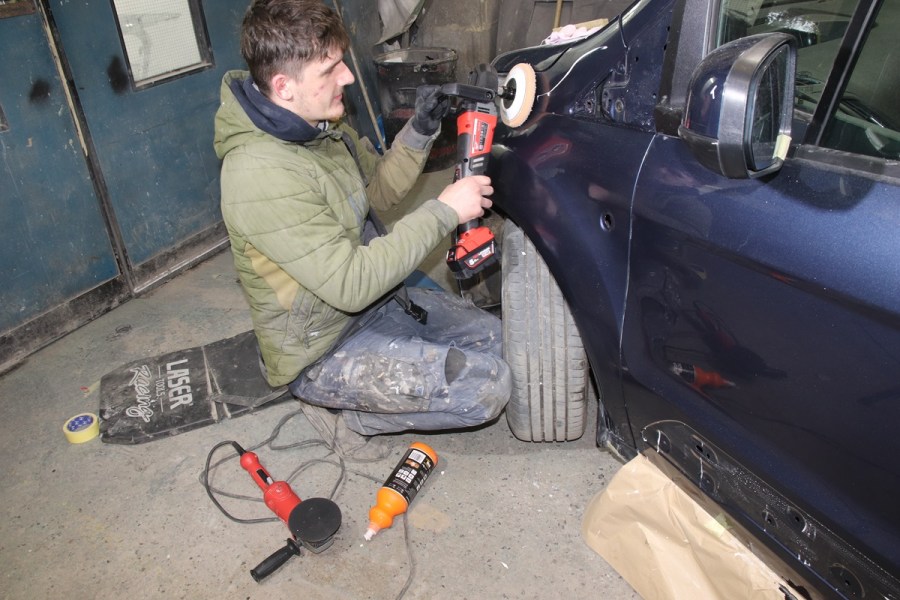
Milwaukee 180mm 18V brushless cordless polisher
Pros: Lots of accessories and everything you need to get started in one huge carrycase
Cons: Expensive if you don’t intend to do lots of polishing
RRP: $223.78, buy it here / £166.80, buy it here.
The most expensive polisher kit in this group test, unless you already have the batteries for other Milwaukee power tools. Perhaps you get what you pay for. This one has a brushless motor, but with an electronic brake. So when the trigger is released to switch off the motor, it doesn’t slow down under its own speed. Instead, it stops progressively within a second or two and you can feel the motor halting.
There’s room in the carrycase to store the polisher without having to completely dismantle it – just detach the battery and backing pad.
With six speed settings (800-2,000rpm), a rotary dial on the top of the body switches between them. There’s a two-stage trigger to start the motor, so it spins up progressively.
Despite this polisher is 180mm (seven inches), the diameter of the supplied backing pad, two sponges and polishing bonnet is five to just over six inches (125-160mm). It is, however, light, agile and easy to use.
For more information about the Milwaukee 180mm 18V brushless cordless polisher, be sure to check out the full review.
We check 1,000s of prices on 1,000s of retailers to get you the lowest new price we can find. Fastcar may get a commission from these offers. Read more here.
How to buy the best car polisher
Your decision on which polisher to buy will probably start with budget, which helps to narrow down the numbers. But think about how much your paintwork is really worth. You may want to spend a little more on a polisher to help preserve it.
Cordless polishers are on trend, but can you manage with a power cord instead? If so, it means you don’t have to buy batteries and a charger. If cordless is the way to go, then look for bundle deals and shared tools.
The diameter of each polisher is important. Measured in inches or millimeters, it’s useful to know when it comes to buying more sponges and pads. Check out their costs first. And find out how these are fitted to the polisher. Some polishers have a threaded spindle. Others have a threaded insert.
Finally, think about weight, speed settings and noise levels. All of these factors contribute towards whether you look forward to polishing or put it off.

